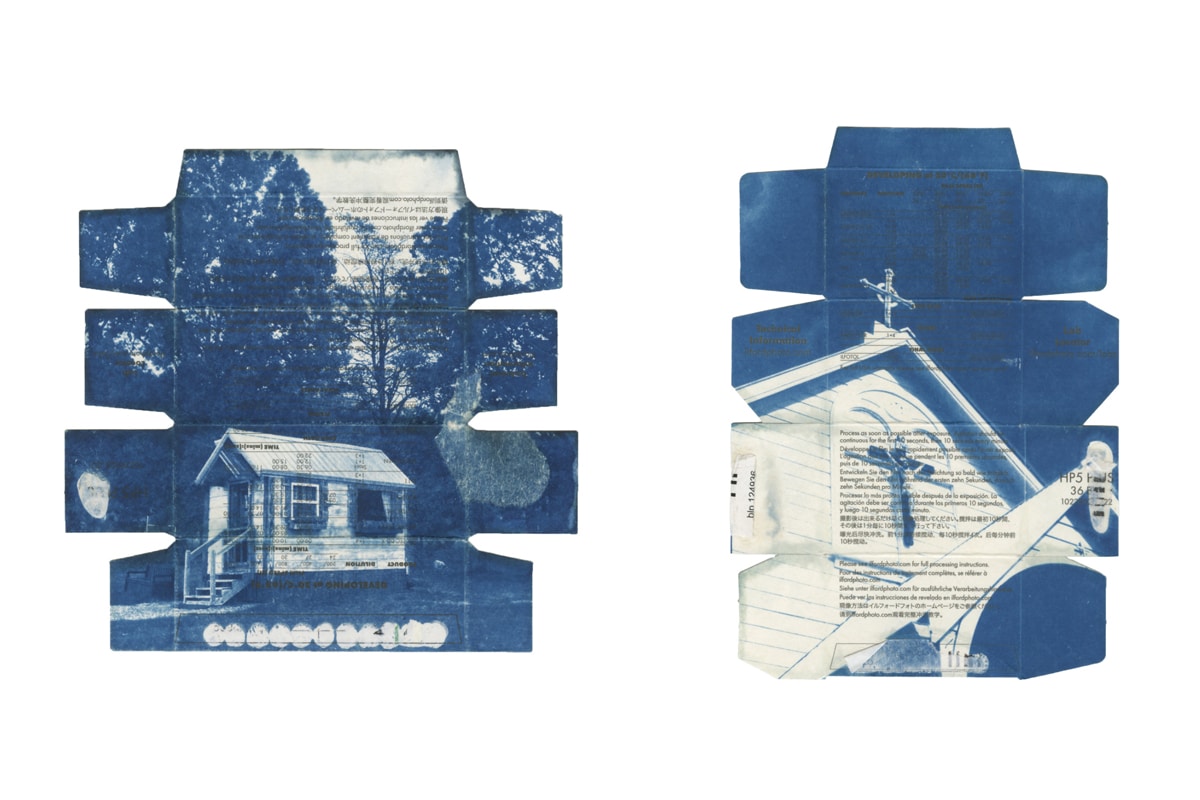Filme haben Trailer, Bücher haben Klappentexte und Kreativschaffende haben Künstlererklärungen. Ein Artist Statement ist eine schriftliche Erklärung über die Arbeit eines Künstlers, die den künstlerischen Prozess, die Einflüsse und die Absichten beinhalten kann. Künstlerinnen und Künstler nutzen Künstlererklärungen, um der Welt ihre kreative Vision mitzuteilen.
Ein aussagekräftiges Künstlerstatement ist ein Kommunikationsinstrument zwischen dem Künstler und dem Publikum, das zu einem tieferen Verständnis seiner Arbeit beiträgt. Die Adressaten eines Künstlerstatements sind in der Regel Betrachter, Kuratoren und Kunstkritiker.
Jedes Künstlerstatement ist einzigartig, doch einige sind stark, während andere die drängenden Fragen der Betrachter nicht beantworten. Lies diesen Artikel weiter, um zu erfahren, wie du ein herausragendes Künstlerstatement schreibst und wie 10 andere Kreative aus verschiedenen Disziplinen an ihre Statements herangegangen sind.
Die Bestandteile eines erfolgreichen Artist Statements
Ein erfolgreiches Künstlerstatement besteht aus einem oder mehreren Bestandteilen, die einen Einblick in die Arbeit des Künstlers/der Künstlerin geben.
Persönliche Verbindung
Es kann wichtig sein, in einem Künstlerstatement eine persönliche Verbindung herzustellen, denn so können die Betrachter eine emotionale oder intellektuelle Bindung zu dem Künstler und seinem Werk aufbauen. Diese persönliche Note kann den Betrachter/innen helfen, sich auf einer tieferen Ebene mit dem/der Künstler/in zu identifizieren, was das Einfühlungsvermögen fördert und eine stärkere Verbindung zwischen dem Publikum und dem Kunstwerk schafft.
Wie viele persönliche Informationen du preisgibst, hängt von dir und deinem Publikum ab und davon, ob es für die Arbeit, die du erstellst, relevant ist. Es ist besser, sich auf die Seite der Professionalität zu schlagen, als etwas über sich selbst zu erzählen, das nicht authentisch wirkt.
Ausdrucksmittel und Techniken
Eine detaillierte Beschreibung der Techniken, die im Schaffensprozess verwendet wurden, kann das technische Know-how und die Beherrschung des Handwerks des Künstlers zeigen. Das ist besonders wichtig für potenzielle Käufer, Sammler oder Kuratoren, die die technischen Fähigkeiten eines Künstlers bei der Bewertung seiner Arbeit berücksichtigen.
Themen und Inspirationen
Themen und Inspirationen helfen dabei, einen Kontext für das Kunstwerk zu schaffen, der es dem Betrachter ermöglicht, die zugrunde liegenden Konzepte und Ideen zu verstehen, die der Künstler erforscht. Indem sie diese Einflüsse mitteilen, bieten die Künstler/innen den Betrachter/innen einen Bezugsrahmen, um ihre Arbeit zu interpretieren und sich tiefer mit der künstlerischen Erzählung zu verbinden.
Ziele und Absichten
Wenn Künstlerinnen und Künstler ihre Ziele und Absichten in ihrem Statement zum Ausdruck bringen, bieten sie Einblicke in die beabsichtigte Botschaft, die Emotionen oder Konzepte des Künstlers und helfen den Betrachterinnen und Betrachtern, die Bedeutungsebenen des Kunstwerks zu verstehen. Dieser Einblick fördert das Verständnis für die Absichten des Künstlers und verbessert das Gesamterlebnis des Betrachters.
Letztlich ist jedes Künstlerstatement einzigartig, und nicht jedes wird alle vier hier vorgestellten Elemente enthalten. Die richtige Kombination hängt von den Konventionen deines gewählten Mediums und den Ambitionen ab, die du für deine Arbeit hast.
Künstlerinnen und Künstler, die auf Stipendien hoffen oder sich für Künstleraufenthalte bewerben, können zum Beispiel mehr technische Details und Schulbildung angeben, während Künstlerinnen und Künstler, die kreative Partnerschaften anstreben, eine abstraktere Erklärung abgeben können, wie zum Beispiel die erste Künstlerin in unserer Liste von Beispielen, Yayoi Kusama.
10 aussagekräftige Beispiele für Künstlererklärungen
Lass dich von den Aussagen echter Künstlerinnen und Künstler aus verschiedenen Fachbereichen inspirieren, von der Bildhauerei bis zu Mischtechniken und darüber hinaus.
Beispiel 1: Bildender Künstler Yayoi Kusama
Erklärung des Künstlers:
"Meine Kunst entsteht aus Halluzinationen, die nur ich sehen kann. Ich übersetze die Halluzinationen und obsessiven Bilder, die mich plagen, in Skulpturen und Gemälde."
Was es effektiv macht:
Diese Aussage stammt von Kusama, einer berühmten japanischen Künstlerin, die als "Prinzessin der Tupfen" bekannt ist und die letzten vier Jahrzehnte freiwillig in einer psychiatrischen Klinik gelebt hat. Ihr Künstlerstatement ist ein Blick in den Kopf eines "verrückten Genies". Dass Kusamas Geisteszustand Teil ihres kreativen Prozesses ist, verleiht ihren farbenfrohen Avantgarde-Kreationen, von denen sich viele um das Thema der Unendlichkeit drehen, eine weitere Ebene.
Beispiel 2: Bildhauer Antony Gormley
Erklärung des Künstlers:
"Ich interessiere mich für das Rohmaterial der Skulptur, das Material, aus dem sie gemacht ist: der gelebte Körper. Ich interessiere mich für den Körper nicht als Bild, sondern als Ort. Von diesem Körper aus haben wir alle unsere sensorischen Beziehungen zur Welt. Alle unsere Metaphern, zu denen auch die Bildhauerei gehört, gehen von dieser Basis aus."
Was es effektiv macht:
Der britische Bildhauer Sir Antony Mark David Gormley stellt den Körper als physischen Ort dar und vergleicht ihn mit Ton. Auf diese Weise stellt der Künstler einen Bezugsrahmen zur Verfügung, mit dem er die Welt betrachtet. Wer sich zu Metaphern und Parallelen hingezogen fühlt, wird nach der Lektüre einer solchen Aussage geneigt sein, sich Gormleys Werke anzusehen.
Beispiel 3: Fotograf Annie Leibovitz
Erklärung des Künstlers:
"Ich habe keine zwei Leben. Es ist ein einziges Leben, und die persönlichen Bilder und die Auftragsarbeiten gehören alle dazu. Die Fotografie war schon immer eine Leidenschaft von mir, und ich hatte das Glück, sie zu meinem Beruf zu machen. Meine Herangehensweise an die Fotografie war schon immer spontan. Ich interessiere mich für den Moment und nicht für die Zeit, die ich gebraucht habe, um dorthin zu gelangen."
Was es effektiv macht:
In ihrem Künstlerstatement macht eine der berühmtesten Fotografinnen der Welt ihre Arbeit auf bescheidene Weise zugänglicher. Sie erwähnt nicht, dass sie einen BFA-Abschluss vom San Francisco Art Institute hat, sondern konzentriert sich stattdessen auf ihre Leidenschaft und die Ungekünsteltheit ihrer Porträts, die ihr Handwerk für alle erschwinglich machen.
Beispiel 4: Maler Gerhard Richter
Erklärung des Künstlers:
"Für mich ist Kunst die Wiederherstellung der Ordnung. Sie kann alle möglichen schrecklichen Dinge besprechen, aber am Ende muss es Zufriedenheit geben. Ein bisschen Hunger, aber auch Zufriedenheit."
Was es effektiv macht:
Der deutsche bildende Künstler Gerhard Richter widmet sich in seinem Künstlerstatement den Themen, die Kunst behandeln sollte, sowie den Emotionen, die Kunst beim Betrachter hervorrufen sollte. Dieses Gefühl bietet einen Anknüpfungspunkt für andere, die den gleichen "Hunger, aber auch die gleiche Befriedigung" aus ihrer künstlerischen Erfahrung ziehen wollen.
Beispiel 5: Mixed Media Artist Wangechi Mutu
Erklärung des Künstlers:
"Meine Arbeit ist eine Sammlung von verschiedenen Ressourcen, eine Sammlung von Erfahrungen. Es geht darum, die Geschichte zu verstehen, die Macht der Geschichte zu verstehen, die Macht der Macht, die Macht der Schönheit, die Macht der Transformation und die Macht der Bestimmung."
Was es effektiv macht:
Die künstlerische Aussage der in Kenia geborenen amerikanischen Künstlerin Wangechi Mutu befasst sich mit Macht und deutet Ungleichheit an, deren Spannung ein Hauptthema ist, das Mutu oft in den Medien anspricht. Die vielen Quellen und Erzählungen deuten auf eine Nacherzählung der Geschichte hin, die den Betrachter neugierig macht und ihm Lust auf mehr macht.
Beispiel 6: Bildender Künstler Ai Weiwei
Erklärung des Künstlers:
"Ich weiß, dass es unter normalen Umständen für einen Künstler unerwünscht ist, als politischer Aktivist oder Dissident abgestempelt zu werden. Aber ich habe diese Barriere überwunden. Der Kampf lohnt sich, wenn er neue Wege zur Kommunikation mit den Menschen und der Gesellschaft eröffnet."
Was es effektiv macht:
Indem er sich selbst als Dissident bezeichnet, wendet sich Weiwei an andere, die den Status quo in Frage stellen wollen oder das Gefühl haben, nicht in die Gesellschaft zu passen. Auf diese Weise möchte Weiwei mit seinem Künstlerstatement eine Verbindung zu anderen sozial bewussten Betrachtern herstellen, indem er das übergeordnete Ziel verfolgt, Ausdruck und Kommunikation zu fördern.
Beispiel 7: Bildender Künstler Andy Warhol
Erklärung des Künstlers:
"Ich male einfach Dinge, die ich schon immer schön fand, Dinge, die man jeden Tag benutzt und über die man nie nachdenkt."
Was es effektiv macht:
Warhols künstlerische Aussage ist genauso ikonisch wie seine Kunst, denn er lässt die Betrachter alltägliche Gegenstände in einem neuen Licht erscheinen. Sein künstlerisches Statement lädt die Menschen dazu ein, ihr gewöhnliches Leben neu zu betrachten.
Beispiel 8: Maler Pablo Picasso
Erklärung des Künstlers:
"Ich habe nie Versuche oder Experimente gemacht. Wann immer ich etwas zu sagen hatte, habe ich es so gesagt, wie es gesagt werden musste... Ich kann kaum verstehen, welche Bedeutung dem Wort "Forschung" im Zusammenhang mit moderner Malerei beigemessen wird. Meiner Meinung nach hat das Suchen in der Malerei keine Bedeutung. Das Finden ist die Hauptsache."
Was es effektiv macht:
Picassos künstlerische Aussage gibt einen klaren Hinweis auf seine Methode, die weg von der Forschung und hin zur kreativen Entdeckung führt. Als weltbekannter Maler ist es nur logisch, dass er keine Zeit damit verbringt, seine Methoden vor dem Publikum zu bestätigen.
Beispiel 9: Bildhauer Richard Long
Erklärung des Künstlers:
"Das liegt in der Natur der Sache:
Kunst über Mobilität, Leichtigkeit und Freiheit.
Einfache kreative Handlungen wie Gehen und Markieren
über Ort, Lokalität, Zeit, Entfernung und Messung.
Arbeiten mit rohen Materialien und meinem menschlichen Maßstab
in der Realität der Landschaften".
Was es effektiv macht:
Der britische Künstler Richard Long, der für seine natürlichen Landschaftsinstallationen bekannt ist, liefert eine überraschend poetische Künstlererklärung, die seinen kreativen Stil widerspiegelt.
Beispiel 10: Maler Edward Hopper
Erklärung des Künstlers:
"Ich benutze fast reines Terpentin, um anzufangen, und füge nach und nach Öl hinzu, bis das Medium zu reinem Öl wird. Ich verwende so wenig Öl wie möglich, das ist meine Methode."
Was es effektiv macht:
Edward Hopper konzentriert sich in seinem Künstlerstatement ganz auf die Beschreibung seiner einzigartigen Methode, um die Aufmerksamkeit auf die unorthodoxe Methode der Ölmalerei zu lenken, die ganz ihm eigen ist.
Baue dein Portfolio mit Format auf
Der #1 Online-Portfolio-Builder wird von Künstlern und Machern bewertet.
Expertentipps für die Erstellung deines eigenen Artist Statements
Es stimmt, dass jede Künstlerin und jeder Künstler sein eigenes Statement hat. Wenn du dich jedoch an diese grundlegenden Richtlinien hältst, kannst du sicher sein, dass dein Künstlerstatement für dich arbeitet und das Publikum fesselt. Ein effektives Künstlerstatement erfüllt den Zweck, den der Künstler beabsichtigt, z. B. Neugierde zu wecken, Vertrauen in sein Fachwissen zu vermitteln oder eine persönliche Verbindung zum Betrachter herzustellen.
Sei authentisch und persönlich
Lass deine einzigartige Stimme und Perspektive durchscheinen, damit die Betrachter/innen eine tiefere Verbindung zu deiner Arbeit aufbauen können. Teile deine persönlichen Erfahrungen, Emotionen und Inspirationen mit, die deinen kreativen Prozess antreiben. Diese Authentizität ermöglicht es den Betrachter/innen, nicht nur die visuellen Aspekte deiner Arbeit zu würdigen, sondern sich auch mit den zugrunde liegenden Geschichten, Konzepten und Ideen auseinanderzusetzen, die deine Kunst wirklich bemerkenswert machen.
Kurz und bündig halten
Vergiss nicht, deine Aussage kurz und klar zu halten und unnötigen Jargon oder verwirrende Sprache zu vermeiden. Das Ziel ist es, deine Ideen auf direktem Wege zu vermitteln, damit deine Botschaft bei deinen Zuhörern ankommt. Vermeide es, deine Aussage mit übermäßigen Details oder Tangenten zu überfrachten, die von deinen Hauptpunkten ablenken könnten. Konzentriere dich stattdessen darauf, das Wesentliche deiner künstlerischen Vision und deiner Absichten zu vermitteln.
Verbinde dich mit deinem Publikum
Um die Verbindung zu deinem Publikum zu verstärken, solltest du über die bloße Beschreibung hinausgehen und dich bemühen, durch dein Künstlerstatement eine Verbindung zu ihnen auf emotionaler und intellektueller Ebene herzustellen. Schlage eine Brücke zwischen deiner eigenen Reise und den Erfahrungen der Betrachter/innen, damit sie sich auf einer tieferen, emotionalen Ebene in dein Werk einfühlen können. Indem du das Publikum einlädst, sich aktiv mit deinem Kunstwerk und seinen tieferen Bedeutungen auseinanderzusetzen, schaffst du eine dynamische Beziehung, die über die Oberfläche hinausgeht und eine tiefe und dauerhafte Wirkung entfaltet.
Regelmäßig bearbeiten und überarbeiten
Die regelmäßige Überarbeitung deines Artist Statements ist wichtig, um seine Klarheit und Wirkung zu verbessern und sicherzustellen, dass es deine künstlerische Vision genau widerspiegelt. Betrachte dein Statement als ein lebendiges Dokument, das sich mit deiner künstlerischen Praxis weiterentwickelt. Indem du dein Artist Statement regelmäßig überarbeitest, kannst du es mit deiner sich entwickelnden künstlerischen Praxis in Einklang bringen und sicherstellen, dass es ein wirkungsvolles Instrument bleibt, um anderen deine künstlerische Vision zu vermitteln.
Feedback von Gleichaltrigen einholen
Und schließlich solltest du dich um das Feedback von Kollegen und Künstlerkollegen bemühen, um neue Perspektiven zu gewinnen und dein Statement weiter zu verfeinern. Ihre Erkenntnisse können dir helfen, deine Botschaft zu verstärken und ein überzeugenderes Statement zu verfassen.
Mit diesen Werkzeugen und Inspirationen bist du gut gerüstet, um ein herausragendes Artist Statement zu verfassen, das der Welt deine kreative Vision effektiv vermittelt.
Wenn du immer noch nicht weiterkommst, überlege dir, was du über einen Künstler, den du bewunderst, wissen möchtest, und fang dort an.
Fazit
Wie die Beispiele in diesem Artikel zeigen, spielt ein aussagekräftiges Künstlerstatement eine entscheidende Rolle, wenn es darum geht, ein tieferes Verständnis für die Arbeit eines Künstlers zu entwickeln und eine Verbindung zum Publikum herzustellen. Indem sie eine persönliche Verbindung herstellen, das verwendete Medium und die Techniken detailliert beschreiben, Themen und Inspirationen mitteilen und Ziele und Absichten zum Ausdruck bringen, können Künstler/innen einen Kontext liefern, zur Erkundung einladen und das Gesamterlebnis der Betrachter/innen verbessern.
Nachdem du nun aussagekräftige Beispiele für Künstlererklärungen kennengelernt und Tipps von Experten erhalten hast, ist es an der Zeit, sie in die Praxis umzusetzen. Denke daran, dass jedes Künstlerstatement einzigartig ist. Finde also die richtige Kombination von Elementen, die zu deinem gewählten Medium und deinen künstlerischen Ambitionen passen. Lass dich auf den Prozess ein und lass deine künstlerische Stimme durchscheinen.












